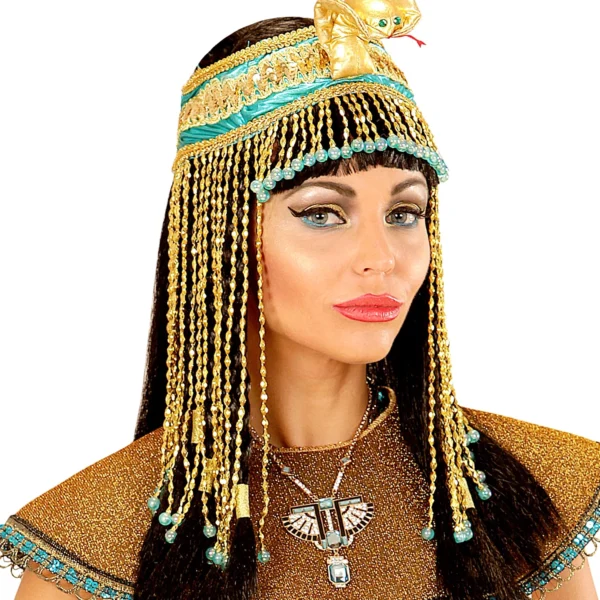Egyptian Costume: 5 Captivating Insights into History
Egyptian costume is a fascinating subject that offers a window into the culture, social structure, and daily life of one of history's most intriguing civilizations. From the simple linen garments of the common people to the elaborate attire of pharaohs and priests, Egyptian costume reflects a blend of practicality, symbolism, and artistry. In this blog post, we'll explore the evolution of Egyptian costume, its cultural significance, and its influence on modern fashion.
The Basics of Egyptian Costume
Materials and Fabrics
The primary fabric used in Egyptian costume was linen, made from the flax plant. Linen was ideal for the hot, dry climate of Egypt, as it is lightweight and breathable. The quality of linen varied, with finer weaves reserved for the wealthy and coarser fabrics used by the lower classes.
Common Garments in Egyptian Costume
Shendyt: A wrap-around skirt worn by men, typically tied at the waist. It varied in length and style depending on the wearer’s status and the period.
Kalasiris: A simple, sheath-like dress worn by women, often held up by straps. It could be worn alone or layered with other garments.
Cloaks and Shawls: Both men and women wore cloaks or shawls for warmth during cooler evenings or for ceremonial purposes.
Symbolism and Social Significance in Egyptian Costume
Colors and Patterns
Colors held significant meaning in Egyptian costume. White symbolized purity and was the most common color due to the natural hue of linen. Other colors, such as red, blue, and green, were achieved through dyes and were often used in decorative elements.
- Red: Symbolized life and victory but could also represent danger.
- Blue and Green: Associated with fertility, rebirth, and the Nile.
Egyptian Jewelry and Accessories in Egyptian Costume
Jewelry was an essential part of Egyptian costume, worn by both men and women. It was not only decorative but also served as a symbol of status and protection.
- Necklaces and Collars: Often made of gold, semi-precious stones, and faience, these were worn to display wealth and invoke divine protection.
- Bracelets and Anklets: Commonly worn by both genders, often inscribed with protective symbols.
- Headpieces and Crowns: Reserved for royalty and deities, these were elaborate and richly decorated.
Egyptian Costume of the Elite and Royalty
Pharaohs and Nobility
The clothing of pharaohs and the nobility was distinguished by its quality, complexity, and adornment. Pharaohs often wore:
- Nemes Headdress: A striped headcloth symbolizing royalty.
- Royal Aprons and Kilts: Made from the finest linen, often pleated and decorated with gold and jewels.
- Uraeus: A cobra emblem worn on the headdress, symbolizing sovereignty and divine authority.
Priests and Priestesses in Egyptian Costume
Priests and priestesses wore specific garments that signified their religious roles. Their attire was often white, symbolizing purity, and included:
- Leopard Skins: Worn by high priests during rituals, symbolizing power and protection.
- Simple Linen Robes: For everyday duties, emphasizing modesty and devotion.

Influence of Egyptian Costume on Modern Fashion
Egyptian costume has left a lasting impact on modern fashion, inspiring designers with its elegance and symbolism. Elements such as:
- Draped Silhouettes: The flowing lines of Egyptian garments have influenced contemporary evening wear.
- Bold Jewelry: Modern statement pieces often draw inspiration from ancient Egyptian designs.
- Eye Makeup: The iconic Egyptian eye makeup style continues to influence beauty trends today.
Experiencing Egyptian Costume Today
Museums and Exhibits
To truly appreciate the beauty and intricacy of Egyptian costume, visiting museums with Egyptian collections is invaluable. Institutions like the British Museum and the Egyptian Museum in Cairo offer extensive displays of clothing, jewelry, and artifacts.
Reenactments and Festivals
Participating in or attending historical reenactments and cultural festivals can provide a hands-on experience of Egyptian costume. These events often feature replicas of ancient garments and accessories, bringing history to life.
DIY Egyptian Costume
For those interested in creating their own Egyptian-inspired attire, consider:
- Materials: Use lightweight fabrics like cotton or linen for authenticity.
- Designs: Incorporate traditional elements such as pleats, drapes, and bold jewelry.
- Accessories: Add statement pieces like wide collars or cuffs to complete the look.
Conclusion
Egyptian costume is a captivating blend of practicality, artistry, and symbolism. From the simple linen garments of everyday life to the opulent attire of pharaohs and priests, these clothes tell the story of a civilization that valued beauty, status, and spirituality. Whether you're exploring ancient artifacts or drawing inspiration for modern fashion, the legacy of Egyptian costume continues to enchant and inspire.

Comments
Post a Comment